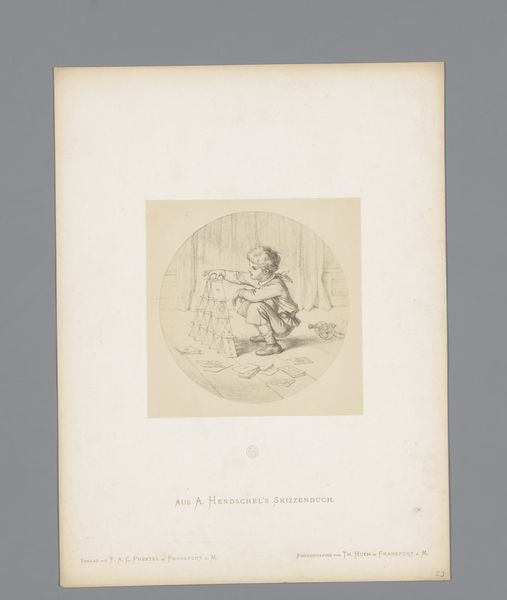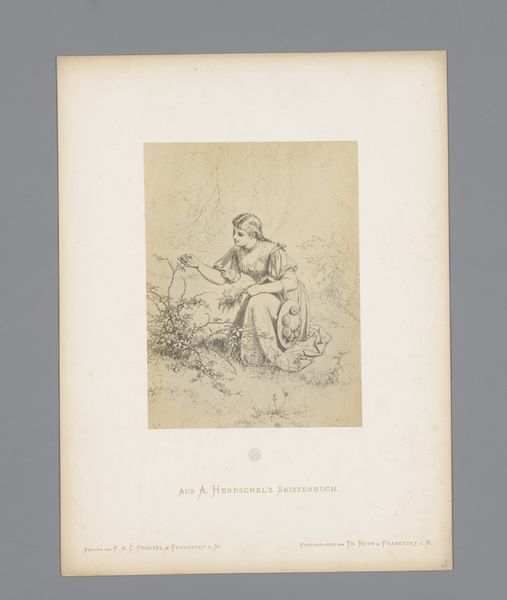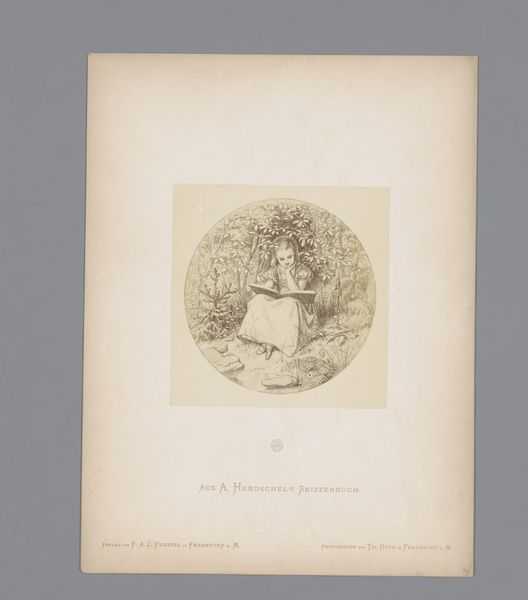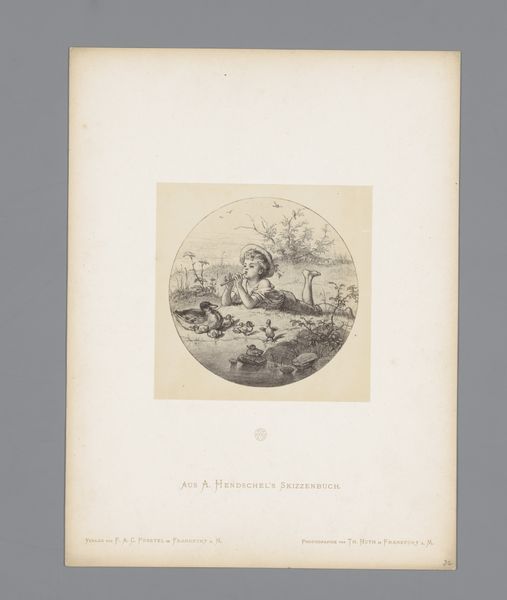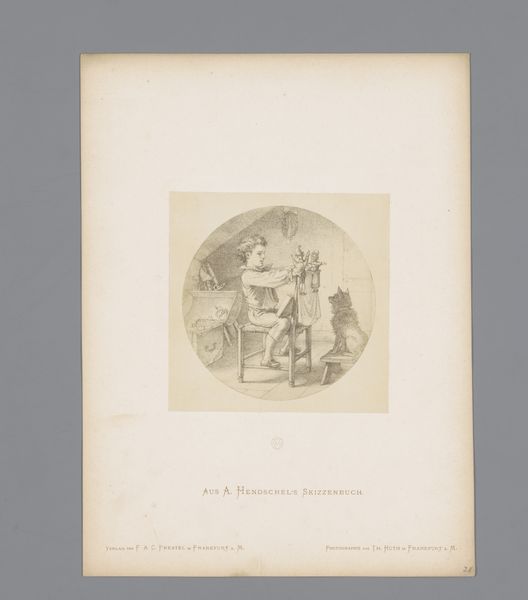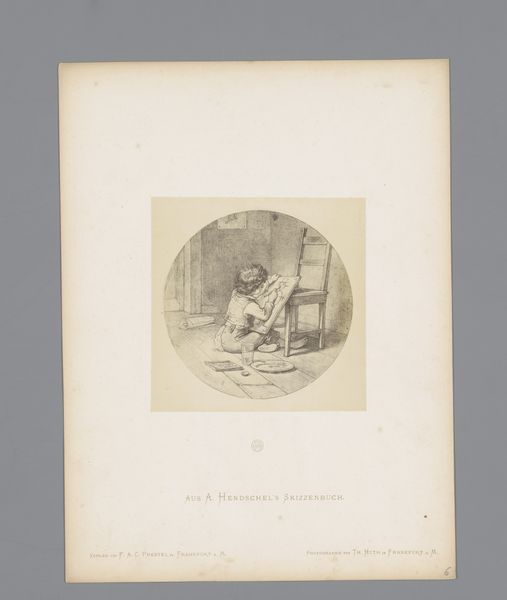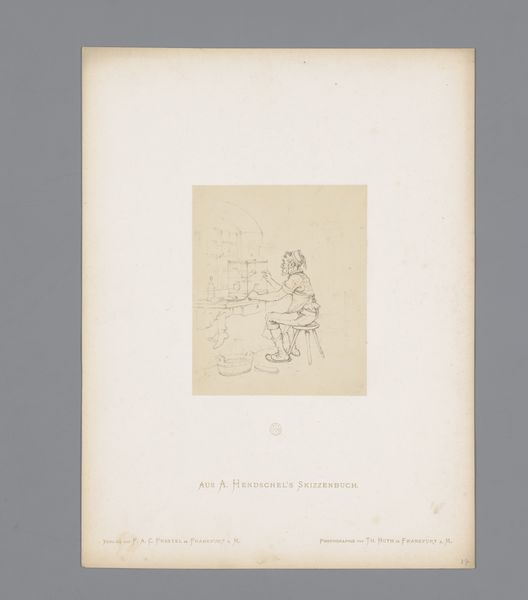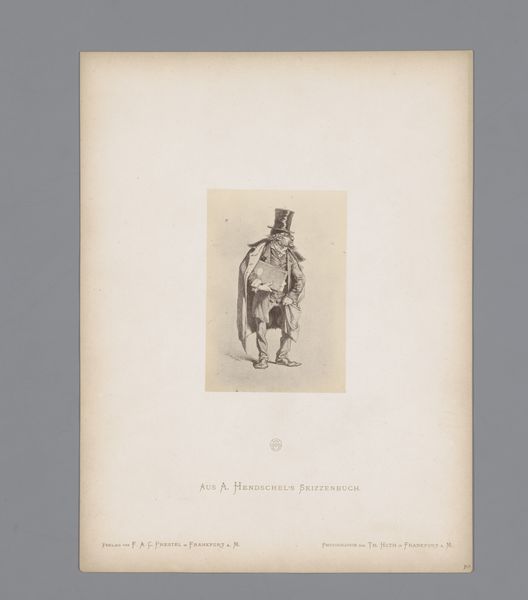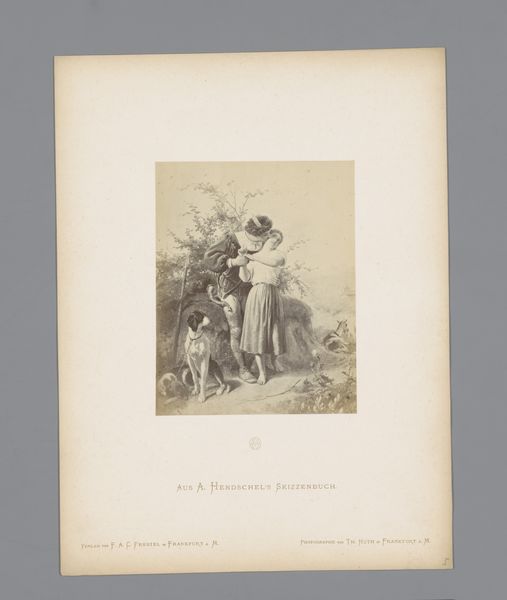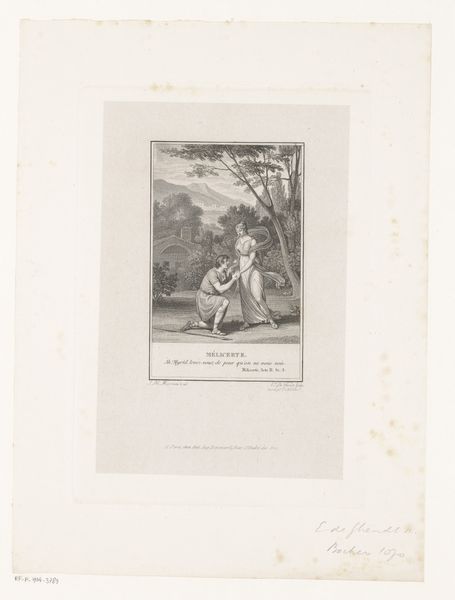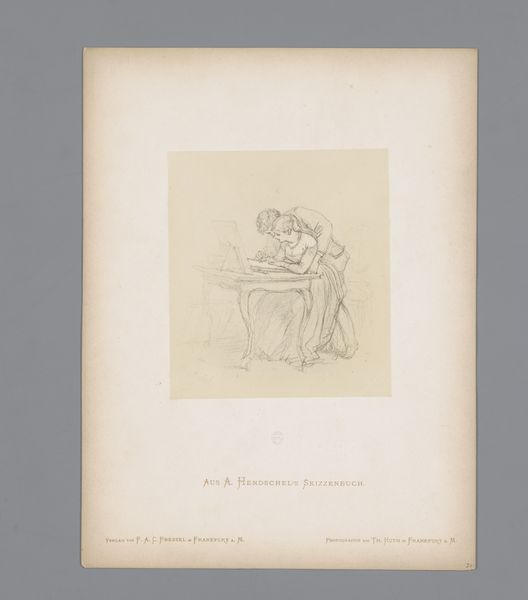
Fotoreproductie van een schets van twee jongens op een slee door Albert Hendschel before 1870
0:00
0:00
Dimensions: height 155 mm, width 131 mm
Copyright: Rijks Museum: Open Domain
Editor: Here we have a photo reproduction of a sketch titled "Two Boys on a Sledge" by Albert Hendschel, created before 1870, using pencil on paper. It feels… quaint, somehow. What can you tell me about it? Curator: This sketch provides a window into 19th-century German society and its values. Consider the depiction of childhood, and labor - What does it suggest about the lived experiences of children in that era? Is there a critique, even subtle, of the societal roles imposed on different ages, even children? Editor: Hmm, I see what you mean. It looks like the standing figure, perhaps an older brother, is weighed down with buckets... almost like he’s forced into labor. Curator: Exactly! Think about the romanticized portrayals of childhood versus the reality of children contributing to the household economy. Hendschel, through his somewhat whimsical style, perhaps subtly questions those roles, inviting us to reflect on privilege, class, and the exploitation of labor, even within the family structure. What about the other boy, sitting on the sledge? Does he embody this concept or refute it? Editor: Well, if the boy with the buckets represents labor, the boy on the sledge seems to represent carefree leisure... an interesting counterpoint. Maybe it's about highlighting these contrasting experiences of childhood within a single composition. Curator: Precisely! It speaks to how access to leisure is distributed, shaped by social and economic hierarchies that determined who had time to play and who had to work. This brings us to questions of accessibility and social justice; are such concerns represented today? Editor: I hadn't considered that this seemingly simple sketch could have such layers of meaning. Now, I see how much context matters. Curator: Indeed. Art provides insights into power, identity, and the struggles of everyday life, reminding us that art from the past is still incredibly relevant in modern intersectional dialogues.
Comments
No comments
Be the first to comment and join the conversation on the ultimate creative platform.
